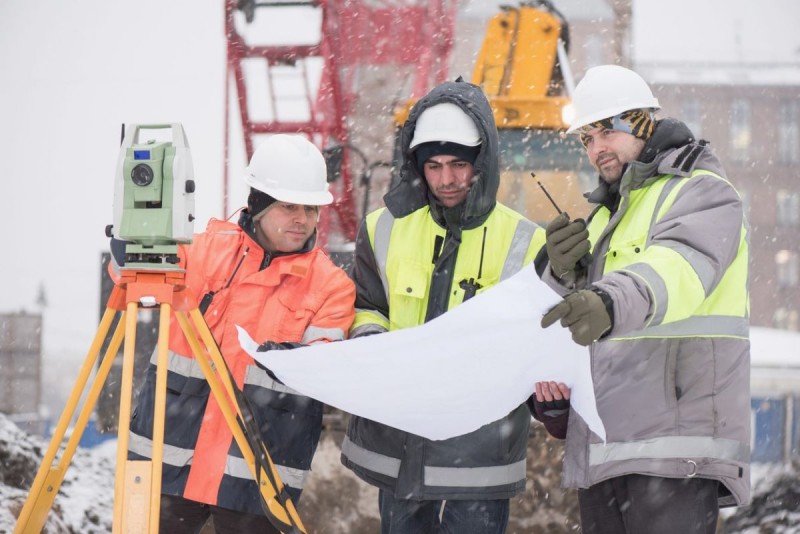Cold environments pose a myriad of challenges, from extreme temperatures to biting winds and icy surfaces. These conditions can lead to serious health risks, making it crucial for individuals to be equipped with the right tools and knowledge to navigate such environments safely.
In the face of these challenges, Personal Protective Equipment (PPE) emerges as the first line of defense. PPE not only shields individuals from the harsh elements but also plays a pivotal role in preventing cold-related injuries. Properly selected and worn PPE is the key to ensuring the well-being of those exposed to the unforgiving conditions of cold climates.
Understanding Cold Environments
The term “cold environment” encompasses a range of locales, each with its own set of challenges. From the bone-chilling temperatures of the Arctic to the sub-Arctic’s mix of cold and dampness, understanding the specific conditions is essential in selecting appropriate PPE.
Cold climates affect the human body in various ways, from constricting blood vessels to decreasing skin temperature. These physiological responses increase the risk of conditions like hypothermia and frostbite. Recognizing these effects is fundamental to developing effective PPE solutions.
Risks and Hazards
Frostbite occurs when skin and tissues freeze, often affecting extremities like fingers and toes. Hypothermia, on the other hand, results from prolonged exposure to cold, leading to a dangerous drop in body temperature. Recognizing the symptoms and understanding preventive measures are crucial for avoiding these cold-induced conditions.
Navigating icy surfaces presents its own set of risks, including slips and falls that can result in fractures or sprains. Choosing the right footwear with adequate traction becomes paramount in preventing these injuries.
Snowstorms can severely reduce visibility, posing challenges for those in cold environments. PPE must address these challenges, providing clear vision and minimizing the risk of accidents in snowy conditions.
The Role of PPE in Cold Environments
Personal Protective Equipment encompasses a wide range of gear designed to protect individuals from workplace hazards. In cold environments, this includes specialized clothing, footwear, and accessories.
While standard PPE serves its purpose, cold climates demand specialized gear. Standard equipment may not adequately protect against the specific challenges posed by extreme cold, making the need for tailored solutions imperative.
Common Types of Cold Weather PPE
Cold weather PPE includes a layered approach to clothing, insulated boots, gloves, and headgear. Each type serves a distinct purpose, collectively forming a comprehensive defense against the elements.
Layering Techniques
Base Layer
The base layer acts as the foundation, managing moisture and retaining body heat. Fabrics like merino wool or advanced synthetics excel in wicking away sweat while providing insulation.
Insulating Layer
Insulating layers trap and retain warmth. The choice between down and synthetic insulation depends on factors such as weight, compressibility, and moisture resistance.
Outer Layer
The outer layer acts as a protective shield, guarding against wind, snow, and moisture. Materials like Gore-Tex provide a breathable yet waterproof barrier, crucial for comfort and safety in extreme cold.
Head and Face Protection
Considering the vulnerability of the head and face to cold, insulated hats, balaclavas, and face masks become essential components of a well-rounded PPE ensemble.
Footwear for Cold Environments
Insulated Boots
Insulated boots are a frontline defense against cold feet. Materials like Thinsulate provide effective insulation, while waterproofing ensures feet remain dry in snow or slush.
Importance of Proper Sizing
Properly sized boots are critical in maintaining circulation and preventing cold-related injuries. Tight boots can restrict blood flow, while loose boots may lead to friction and discomfort.
Traction Aids for Icy Surfaces
Traction aids, such as ice cleats and crampons, are indispensable in preventing slips and falls on icy surfaces. The right choice depends on the specific conditions of the environment.
Hand and Arm Protection
Insulated Gloves and Mittens
Insulated gloves and mittens are vital for protecting hands from the biting cold. Materials like Thinsulate ensure warmth, while waterproofing guards against wet conditions.
Layering for Hands and Wrists
Layering extends to hand protection, with liners and waterproof outer gloves offering versatility and adaptability to changing conditions. Maintaining dexterity is crucial in tasks requiring precision.
Special Considerations for Manual Dexterity
Balancing warmth with manual dexterity is a challenge in cold environments. Selecting gloves that allow for precise movements while providing adequate insulation is essential.
Face and Eye Protection
Importance of Protecting the Face from Extreme Cold
Given the susceptibility of facial skin to frostbite, covering the face with masks, balaclavas, or shields is crucial. This protection is especially vital in windy conditions.
Goggles and Face Shields
Goggles and face shields protect the eyes from wind, snow, and harmful UV radiation. Anti-fog measures ensure clear vision, even in the harshest conditions.
Anti-Fog Measures
Maintaining clear vision in cold environments requires anti-fog measures. Coatings on eyewear, proper ventilation, and selecting goggles with anti-fog features contribute to optimal visibility.
Communication in Cold Environments
Challenges Posed by Cold Weather on Communication Devices
Cold weather can compromise the functionality of communication devices. PPE must extend to weather-resistant and insulated communication equipment to ensure reliable connectivity.
Specialized Equipment for Maintaining Communication
Specialized communication equipment designed for cold environments includes features like large buttons for gloved hands and long-lasting batteries optimized for extreme temperatures.
Emergency Preparedness
Comprehensive emergency plans are essential in cold environments. Addressing factors like shelter, communication, and first aid ensures a swift and organized response to unforeseen challenges.
First aid measures in cold climates must address unique challenges. Equipping individuals with the knowledge and tools to handle frostbite and hypothermia is paramount in preventing serious injuries.
Navigating rescue procedures in extreme cold requires specialized training. Individuals must be prepared to respond to emergencies in remote locations and adverse weather conditions.
Training and Education
Educating personnel on the intricacies of cold weather safety is a proactive approach to preventing injuries. Awareness programs and hands-on training ensure individuals are well-equipped to face the challenges of cold environments.
Simulated training scenarios provide a practical foundation for real-world challenges. Hands-on experiences allow individuals to familiarize themselves with the intricacies of navigating cold environments, reinforcing their competence and confidence in adverse conditions.
Conclusion
In recapitulation, the importance of proper Personal Protective Equipment in cold environments cannot be overstated. The right gear acts as a shield against the formidable challenges posed by extreme temperatures, ensuring the well-being and safety of individuals operating in these harsh conditions.
As we conclude this exploration into Arctic armor and cold weather safety, the journey doesn’t end. Continuous education and awareness are paramount. Staying abreast of technological advancements in PPE, participating in regular training programs, and fostering a culture of safety are crucial for individuals and organizations committed to navigating cold environments securely.
In the ever-changing landscape of cold climates, the commitment to safety must evolve alongside it. By prioritizing education, investing in cutting-edge PPE, and learning from both successes and setbacks, individuals and organizations can forge a path towards safer, more resilient operations in the coldest corners of the world.





